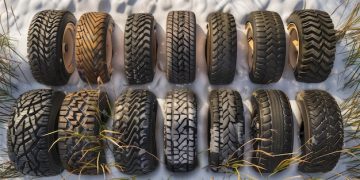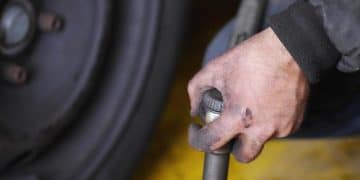Road Trip Emergency Kit: Essential Checklist for 2025
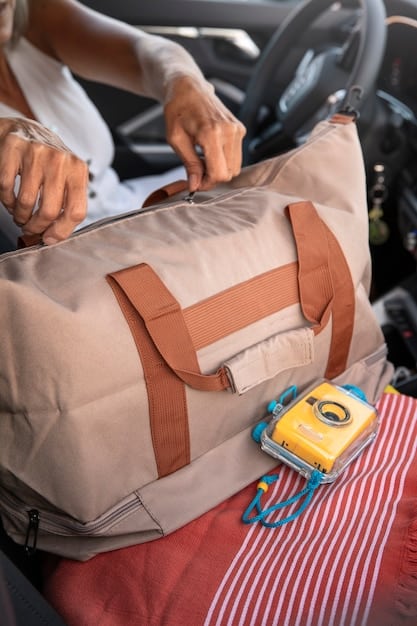
A comprehensive road trip emergency kit for 2025 includes not only standard items like jumper cables and a first-aid kit, but also updated technology like a portable jump starter and a digital tire pressure gauge, ensuring preparedness for unexpected situations on the road.
Planning a road trip for 2025? Ensure a smooth journey by packing a comprehensive road trip emergency kit: preparing for unexpected situations on the road in 2025 is crucial for peace of mind and safety.
Essential Components of a Road Trip Emergency Kit
A well-stocked emergency kit is your first line of defense against unexpected issues on the road. Knowing what to include can make all the difference in handling emergencies efficiently.
Basic Tools and Supplies
Every kit should include a set of basic tools to address minor mechanical issues. These tools can help you perform basic repairs or adjustments until you can reach a professional mechanic.
- Adjustable Wrench: Useful for tightening or loosening bolts and nuts.
- Screwdrivers: Both Phillips head and flathead are essential for various repairs.
- Pliers: Helpful for gripping, twisting, and cutting wires or other materials.
First Aid Essentials
A comprehensive first-aid kit is non-negotiable for any road trip. It should contain items to treat minor injuries and stabilize more serious conditions until professional help arrives.
- Band-Aids: Various sizes to cover cuts and scrapes.
- Antiseptic Wipes: To clean wounds and prevent infection.
- Pain Relievers: Such as ibuprofen or acetaminophen for aches and pains.
In summary, a well-equipped kit with the right tools and first aid supplies provides a solid foundation for handling common roadside emergencies, ensuring you can address minor issues and provide basic medical care until professional help arrives.
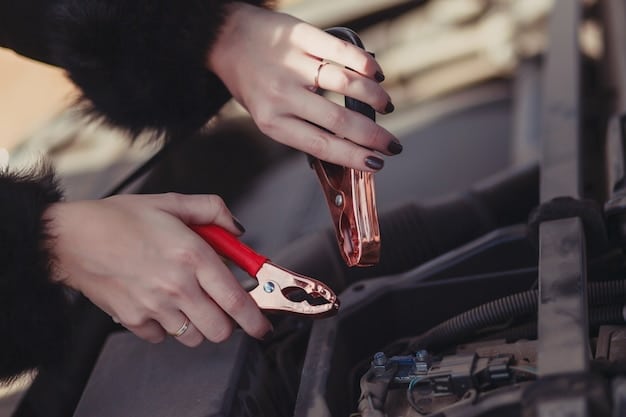
Advanced Tools for Modern Vehicles
Today’s vehicles often require more than just basic tools. Including advanced tools in your emergency kit can help you tackle more complex issues or provide solutions that older kits lack.
Portable Jump Starter
A portable jump starter is a game-changer, eliminating the need for another vehicle to jump-start your car. It’s compact, easy to use, and can save you from being stranded.
Digital Tire Pressure Gauge
Maintaining proper tire pressure is crucial for fuel efficiency and safety. A digital tire pressure gauge provides accurate readings and helps you keep your tires inflated to the correct PSI.
OBD-II Scanner
An OBD-II scanner can diagnose engine problems by reading error codes. This information can help you understand the issue and communicate it effectively to a mechanic.
Overall, incorporating advanced tools into your road trip emergency kit ensures you’re prepared for modern vehicle challenges, providing solutions for battery issues, tire maintenance, and engine diagnostics.
Staying Connected: Communication Devices
Effective communication is vital in emergencies, especially in areas with limited cell service. Having reliable communication devices can help you stay connected and call for assistance when needed.
Satellite Communicator
A satellite communicator allows you to send messages and SOS signals from remote locations where cell service is unavailable. It’s a crucial tool for off-the-beaten-path adventures.
Two-Way Radios
Two-way radios can be useful for communicating with other vehicles in your convoy or with individuals nearby, especially in areas with spotty cell service.
Cell Phone Signal Booster
A cell phone signal booster can amplify weak signals, allowing you to make calls or send texts in areas with limited coverage.
In conclusion, having reliable communication devices in your emergency kit is essential for staying connected and calling for help in areas with limited cell service, ensuring you can reach out in critical situations.
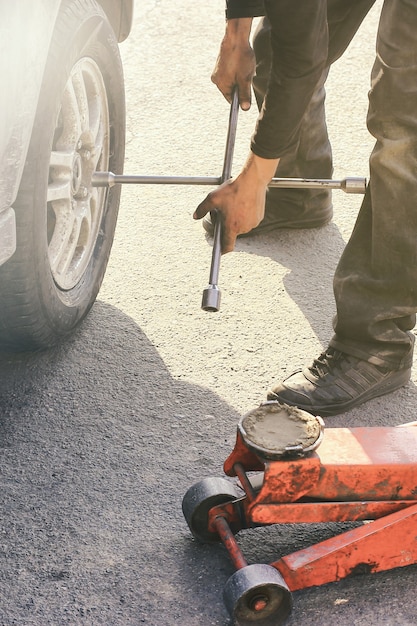
Safety and Visibility Gear
Ensuring your safety and visibility at the roadside is crucial for preventing further accidents. High-visibility gear and warning devices can help alert other drivers to your presence.
Reflective Safety Vest
A reflective safety vest makes you more visible to other drivers, especially at night or in low-light conditions. It’s an essential item when working on your vehicle near traffic.
Warning Triangles or Flares
Warning triangles or flares can be placed around your vehicle to alert oncoming traffic to your presence. They provide an additional layer of safety, especially on highways and busy roads.
Having safety and visibility gear ensures you can alert other drivers to your presence, reducing the risk of accidents and enhancing your safety while addressing roadside emergencies.
Comfort and Survival Items
In certain emergency situations, you may need to wait for extended periods for assistance to arrive. Including comfort and survival items in your kit can help you stay warm, hydrated, and comfortable.
Emergency Blanket
An emergency blanket can provide warmth in cold weather, helping to prevent hypothermia if you’re stranded in a cold environment.
Water and Non-Perishable Food
Having a supply of water and non-perishable food can help you stay hydrated and nourished while waiting for help. Energy bars, canned goods, and bottled water are good options.
Basic Hygiene Items
Including items like hand sanitizer, toilet paper, and moist towelettes can help you maintain basic hygiene if you’re stuck on the roadside.
Comfort and survival items ensure you can stay warm, hydrated, and maintain basic hygiene while waiting for assistance, enhancing your comfort and well-being during extended roadside emergencies.
Customizing Your Kit for Specific Needs
Every road trip is unique, and your emergency kit should reflect your specific needs and the conditions you expect to encounter. Customizing your kit can provide added peace of mind and preparedness.
Consider Your Route and Climate
If you’re traveling through desert regions, pack extra water and sun protection. If you’re heading to snowy areas, include items like a snow scraper and extra warm clothing.
Travelers with Children or Pets
If you’re traveling with children, include items like diapers, wipes, and snacks. For pets, pack food, water, and any necessary medications.
Medications and Health Needs
Ensure you have any prescription medications you need, along with a list of dosages and any allergies. Include over-the-counter remedies for common ailments like motion sickness or allergies.
Customizing your emergency kit ensures it meets your specific needs and the conditions you expect to encounter, providing added peace of mind and preparedness for any road trip scenario.
Maintaining and Updating Your Kit
An emergency kit is only effective if it’s properly maintained and updated regularly. Taking the time to inspect and replenish your kit ensures it’s always ready when you need it.
Regular Inspections
Inspect your kit every few months to check expiration dates, battery life, and the condition of your supplies. Replace any expired or damaged items.
Seasonal Updates
Adjust your kit based on the season. Add or remove items as needed to reflect the changing weather conditions and potential hazards.
Review and Replenish After Use
After using any item from your kit, be sure to replace it as soon as possible. This ensures your kit is always fully stocked and ready for the next emergency.
Regular maintenance and updates keep your kit ready for any eventuality, offering continued safety and reliability during every journey. Ensuring your kit is well-maintained can significantly impact its effectiveness in an emergency.
| Key Point | Brief Description |
|---|---|
| 🧰 Essential Tools | Include wrench, screwdrivers, and pliers for basic repairs. |
| 🩹 First Aid Kit | Band-aids, antiseptic wipes, pain relievers for minor injuries. |
| 🔋 Portable Jump Starter | Jump-start car without needing another vehicle. |
| 📡 Communication Devices | Satellite communicator or two-way radios for remote areas. |
FAQ Section
▼
A basic emergency kit should include jumper cables, a first-aid kit, a flashlight, warning triangles, a tire repair kit, and basic tools like screwdrivers and pliers.
▼
You should inspect your emergency kit every three to six months to ensure that all items are in good condition and that nothing has expired, like medications or food items.
▼
Advanced items include a portable jump starter, a digital tire pressure gauge, an OBD-II scanner, and a satellite communicator for remote areas without cell service.
▼
Comfort items to consider include an emergency blanket, water, non-perishable food items, and basic hygiene products such as hand sanitizer and moist towelettes.
▼
Customize your kit by considering your route, climate, and the needs of your passengers, including children or pets. Also, include any necessary medications and health-related items.
Conclusion
Being prepared with a comprehensive road trip emergency kit: preparing for unexpected situations on the road in 2025 can significantly enhance the safety and enjoyment of your travels. Keep your kit well-maintained and tailored to your specific needs to ensure a smooth and secure journey.

